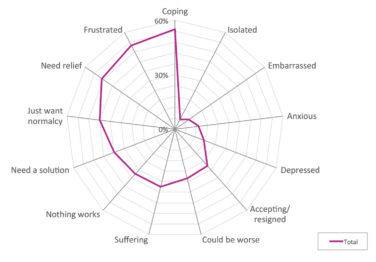Patient engagement is a classic “iceberg” field: way more is hidden below the surface than the immediate optics suggest. For example, while people may intuit that empathy, logistical competence, and a call center infrastructure are critical components of patient engagement, they don’t always realize how research capabilities, legal and regulatory expertise, and privacy policies play into all of this.
This point was made clear to me recently, when someone thought our integration with pharma industry’s cloud computing provider Veeva was noteworthy enough to put us up for an award. While some might ask, “Can you work with this system,” I would ask, “How could you not?” The challenge for marketers is to balance compliance with commercial objectives. To make it happen, we have to think along two dimensions of legal and regulatory safety: people and infrastructure.
People
Mandatory annual legal and regulatory trainings and refreshers are an investment in human capital, and they’re critical to successful patient engagement. Knowing and respecting the rules that apply is what keeps brands safe. These rules include continually evolving privacy regulations, pharmacovigilance, fair balance, transparency disclosures, intellectual property, and what “on-label” means. Teams that directly engage with patients must know when and how to report an adverse event/product complaint (AE/PC) and the steps that follow after the initial AE/PC report. They have to know how to process data in a HIPAA- and GDPR-compliant way. They have to also be aware of privacy-related concepts, such as the “Right to be forgotten.”
That’s the internal side of the “people” dimension. But there’s an external side as well. Keeping your brand safe also means that you invest in the patients you engage with: Patient Ambassadors, Patient Opinion Leaders (POLs), and influencers alike must understand the context of their engagement. Different rules apply for each of these groups. Let’s briefly look at those.
Ambassador, POL, Influencer
Patient Ambassadors are authentic, credible members of the patient community who represent a company or brand across its marketing and communication channels. As such, the association between these individuals and the brand or the company’s presence in a disease category is so close that their legal and regulatory awareness must be almost as heightened as that of a team member. Manufacturers usually retain a specialized patient engagement agency to ensure legal and regulatory compliance of their Patient Ambassadors.
POLs, on the other hand, are recognized, well-connected experts from the patient community who have a certain degree of prominence outside of their engagement with the brand. As their agenda may not align with brand objectives or legal and regulatory guidelines, companies usually work with them on a consulting basis, without associating themselves too strongly with the individual. This form of patient engagement is not so much about external communication as it is about learning from the community. Consequently, the legal and regulatory challenges lie mainly in scenarios where there is a public-facing element of the engagement and in compensation for the POL’s time.
The term “influencer” is a bit murky and can mean both Patient Ambassadors or POLs, but it is mostly used to describe a person who agrees to enter into a transactional marketing relationship, providing access to their existing social media followership. These influencers’ clout is not necessarily related to the disease category in question, which means that their audience also doesn’t usually have a particular affinity for the condition. Brands must carefully weigh whether the influencer’s followership is targeted enough, whether their brand can be authentically represented by this individual, and importantly, whether the influencer can navigate legal and regulatory guidelines to avoid scandals.
It is my firmly held opinion that this approach is more tailored to lifestyle-related products than medical treatments. While this approach can work for some classes of drugs and devices, brands have to be able to rely on the influencer to strictly follow the guidelines—no small feat, given the confidence and prominence of many of these individuals.
Infrastructure
The best legal and regulatory training isn’t worth much if you don’t give your team members the instruments to ensure compliance. For example, it’s important to tell people what an AE is and that they need to report it. But a process and system also needs to be in place to handle an AE: Your team needs a secure reporting facility that protects the patient’s privacy while meeting the pharmacovigilance obligations we’re all under. It’s too late to figure these things out once you’re already confronted with an AE. Physical infrastructure and business processes are important safeguards for brands.
Your processes, your building security, your hardware and locally installed software are all internal pieces of infrastructure that must withstand scrutiny from a legal and regulatory perspective. Making thoughtful investments in this department can go a long way to safeguarding compliance integrity as long as the bulk of the workforce is located in the office. But that can no longer be taken for granted. The rise of remote work has lent urgency to the implementation of cloud-based software-as-a-service (SaaS) solutions as part of a company’s external infrastructure. Any industry, but ours in particular, has to carefully vet which systems are suitable for a company’s specific needs.
Beyond the Tight Corset
I wouldn’t recommend viewing all of this as strictly limiting factors. Legal and regulatory rules protect patients and, ultimately, the industry, by giving everyone confidence that there won’t be any unwelcome surprises. Icebergs are dangerous when you’re not aware of all that’s unseen. But when you know it’s there, you can safely navigate the area.
Done right, patient engagement goes beyond marketing within a tight corset. It becomes a way to grow a brand’s reputation, market share, and profile, as well as a vehicle for healthcare transformation, patient empowerment, and improved health outcomes.







